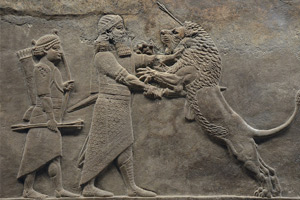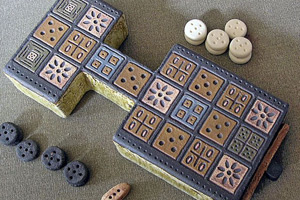
Trees in Sumeria
It is easy to think of Sumeria as a barren land, only kept alive by irrigation canals. In addition to irrigated trees such as date palms, we also find interesting flora such as the tamarisk, juniper and cedar.

The Ur III period lasted for about 100 years, from about 2100 BCE to 2100 BCE. It covers the Third Dynasty of Ur or the Neo-Sumerian Empire, with the capital in the city of Ur. After the fall of the Akkadian empire, there was a period where most of of southern Mesopotamia was ruled by Gutian invaderrs (from the mountains of present-day Iran), before they were expelled by Utu-hengal of Uruk. Utu-hengal was followed by Ur-Nammu, a brilliant general, who started the Third Dynasty of Ur.
Ur-Nammu created the world's first law code, the Code of Ur-Nammu.
It is possible that Abraham, the patriarch of Judaism, Christianity and Islam, was born in Ur during the Ur III period. It is mentioned that he was born in Ur Kaśdim, but it is not certain that Ur in Mesopotamia was this same Ur.
During the Ur III period, there were a large number of sheep in southern Mesopotamia, and a substantial industry weaving woolen and linen cloth. These cloths were important export goods. The Neo-Sumerian Empire traded with the Gulf Region (present day Oman and UAE) and indirectly with the Harappa and Indus civilisations. In return, Sumeria imported metals, wood, shells, ivory and semi-precious stones.
Since the Akkadian Empire, the most common spoken language was Akkadian, a semitic language. However, most literature and administrative documents were written in Sumerian. It is believed that the "Epic of Gilgamesh" was written down in this period.
You may also be interested in these articles

It is easy to think of Sumeria as a barren land, only kept alive by irrigation canals. In addition to irrigated trees such as date palms, we also find interesting flora such as the tamarisk, juniper and cedar.

If you have visited the Sumerian section of the British Museum, chances are you have seen the Lion Hunt of Ashurbanipal. It is a series of very impressive wall coverings illustrating the King Ashurbanipal's prowess.

Possibly the oldest board game in existence, and surely the oldest we have rules for, the Game of Ur is a fascinating predecessor to Backgammon. Watch a video on how to play it, and see the original at British Museum.